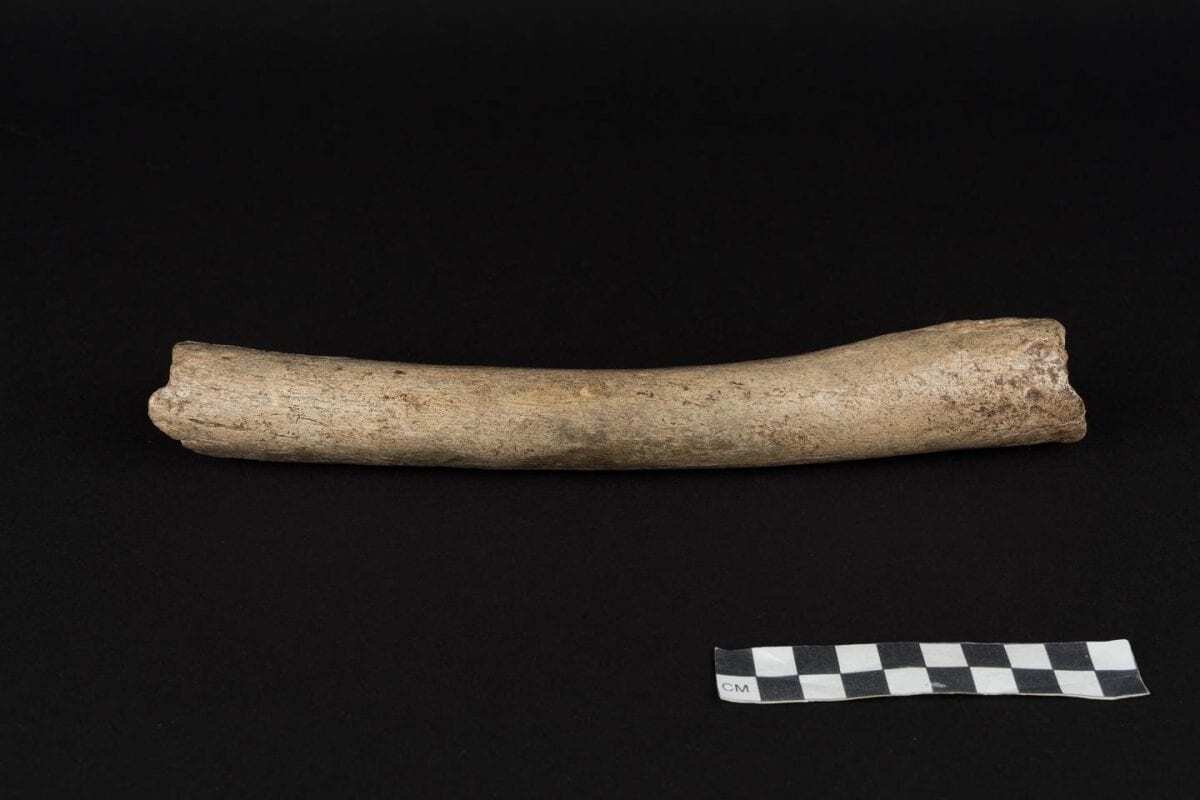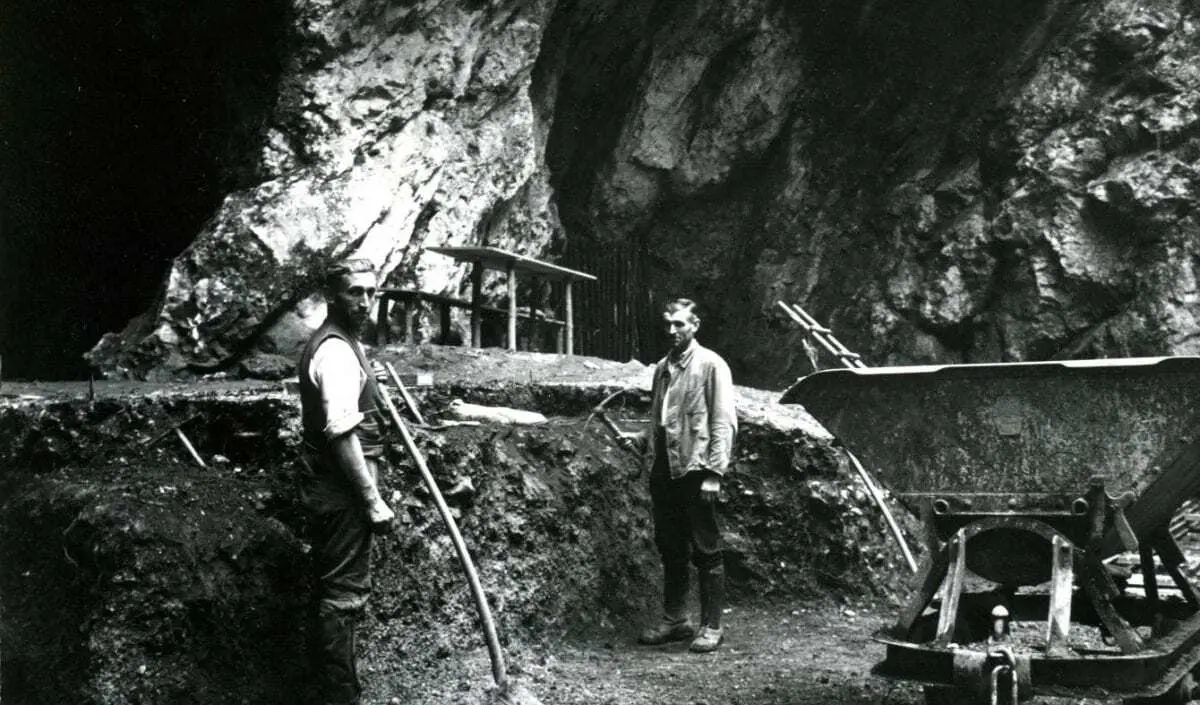Ancient mitochondrial DNA from the femur of an archaic European hominin is helping to resolve the complicated relationship between modern humans and Neanderthals.
The genetic data recovered by the research team, led by scientists from the Max Planck Institute for the Science of Human History and the University of Tübingen, provides a timeline for a proposed hominin migration out of Africa that occurred after the ancestors of Neanderthals arrived in Europe by a lineage more closely related to modern humans. These hominins interbred with Neanderthals already present in Europe, leaving their mark on the Neanderthals’ mitochondrial DNA. The study, published today in Nature Communications, pushes back the possible date of this event to between 470,000 and 220,000 years ago.
Mitochondria are the energy-producing machinery of our cells. These mitochondria have their own DNA, which is separate from our nuclear DNA. Mitochondria are inherited from mother to child and can thus be used to trace maternal lineages and population split times. In fact, changes due to mutations in the mitochondrial DNA over time can be used to distinguish groups and also to estimate the amount of time that has passed since two individuals shared a common ancestor, as these mutations occur at predictable rates.
Complicated relationship between Neanderthals and modern humans
Prior research analyzing nuclear DNA from Neanderthals and modern humans estimated the split of the two groups at approximately 765,000 to 550,000 years ago. However, studies looking at mitochondrial DNA showed a much more recent split of around 400,000 years ago. Moreover, the mitochondrial DNA of Neanderthals is more similar to that of modern humans, and thus indicates a more recent common ancestor, than to that of their close nuclear relatives the Denisovans. There has been debate about the cause of these discrepancies, and it has been proposed that a hominin migration out of Africa might have occurred prior to the major dispersal of modern humans. This human group, more closely related to modern humans than to Neanderthals, could have introduced their mitochondrial DNA to the Neanderthal population in Europe through genetic admixture, as well as contributing a small amount of nuclear DNA to Neanderthals but not to Denisovans as recently detected. However, more data was needed to evaluate the feasibility of this scenario and to define the temporal limits of the proposed event.

CREDIT
Photo: Oleg Kuchar © Photo Museum Ulm
The femur of a Neanderthal excavated from the Hohlenstein-Stadel Cave in southwestern Germany provided just such an opportunity. “The bone, which shows evidence of being gnawed on by a large carnivore, provided mitochondrial genetic data that showed it belongs to the Neanderthal branch,” explains Cosimo Posth of the Max Planck Institute for the Science of Human History, lead author of the study. Traditional radiocarbon dating did not work to assess the age of the femur, which was instead estimated using the mutation rate as approximately 124,000 years old. This makes this Neanderthal specimen, designated HST by the researchers, among the oldest to have its mitochondrial DNA analyzed to date. Interestingly, it represents a different mitochondrial lineage than the Neanderthals previously studied. The mitochondrial lineage of HST and of all other known Neanderthals separated from each other very deeply in time, at a minimum of 220,000 years ago. The differences between their mitochondrial DNA indicate that there was more mitochondrial genetic diversity in the Neanderthal population than was previously thought. This suggests that the Neanderthal population size once was much bigger than that estimated for the final stage of their existence.
Timeline for additional migration of hominins out of Africa
The proposed scenario is that after the divergence of Neanderthals and modern human mitochondrial DNA (dated to a maximum of 470,000 years ago), but before HST and the other Neanderthals diverged (dated to a minimum of 220,000 years ago), a group of hominins moved from Africa to Europe, introducing their mitochondrial DNA to the Neanderthal population. Thus this intermediate migration out of Africa would have occurred between 470,000 and 220,000 years ago. “Despite the large interval, these dates provide a temporal window for possible hominin connectivity and interaction across the two continents in the past,” says Posth.
This influx of hominins would have been small enough that it did not result in a large impact on the Neanderthals’ nuclear DNA. However, it would have been large enough to completely replace the existing mitochondrial lineage of Neanderthals, more similar to the Denisovans, with a type more similar to modern humans. “This scenario reconciles the discrepancy in the nuclear DNA and mitochondrial DNA phylogenies of archaic hominins and the inconsistency of the modern human-Neanderthal population split time estimated from nuclear DNA and mitochondrial DNA,” explains Johannes Krause, also of the Max Planck Institute for the Science of Human History, senior author of the study.
Nuclear data from the HST femur would be pivotal in assessing its genomic relationships with Neanderthals, Denisovans and modern humans, but it is extremely challenging to retrieve nuclear DNA from HST due to poor preservation and high levels of modern human contamination. In any case, however, high quality nuclear genome data from more than one individual would be necessary to fully investigate this proposed wave of human migration out of Africa, and is an intriguing area for future study.
MAX PLANCK INSTITUTE FOR THE SCIENCE OF HUMAN HISTORY







